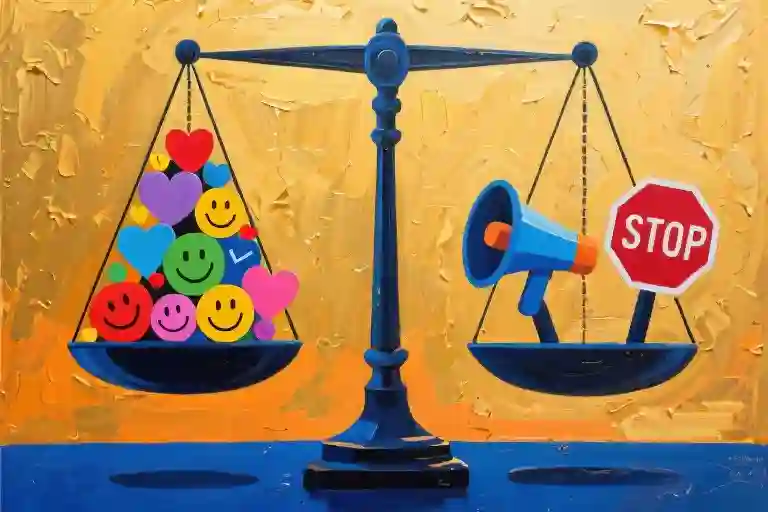You’re walking into Monday’s team meeting with a spring in your step. Last week, you single-handedly resolved a client crisis that saved $500K. Your inbox overflows with praise from stakeholders. But as you start presenting your triumph, you notice crossed arms. Tight-lipped smiles. A colleague suddenly remembers a “urgent call.”
What just happened?
The bitter truth? Your version of workplace heroism might feel like others’ version of steamrolling. That 10x impact you crave? It’s being held hostage by the chasm between how you see yourself and how your team actually experiences you.
The Mirror vs. The Window: Why We All Wear Rose-Colored Glasses
Let’s play a quick mind game. When you:
- Jump in to fix a teammate’s report
- Push through a deadline by overriding objections
- Share “constructive” criticism in meetings
…do you see a problem-solver, decisive leader, and honest communicator?
Here’s what others might see through their window:
🔍 A micromanager who stifles growth
🔍 An authoritarian who silences voices
🔍 A critic who drains team morale
Harvard research reveals a gut-punch statistic: 72% of leaders rate their emotional intelligence higher than their colleagues do. Your intentions live in the mirror. Your impact lives in others’ windows.
Blind Spot 1: The “Helpful” Hurricane
“Let me show you the right way to do this.”
Sarah, a marketing director, once proudly told me how she’d “rescued” 14 projects in Q1. Her wake-up call came via an anonymous peer review: “Sarah’s help feels like a condemnation of my competence.”
The paradox: Urgency to fix things often breaks trust.
Try this instead:
- Ask “How can I best support you here?” before offering solutions
- Replace directives with options: “Would A or B approach work better?”
- Celebrate others’ problem-solving: “I’d love to hear how you’d tackle this”
Blind Spot 2: The “Success” Mirage
You delivered the project. On time. Under budget. Client ecstatic. But why does the breakroom go quiet when you enter?
A tech VP learned this painfully after his “flawless” AI rollout: 31% of his team started job-hunting. The culprit? His dismissiveness during conflicts.
The reality check: Lasting success has two metrics:
- Tangible outcomes (revenue, deadlines)
- Relational capital (trust, psychological safety)
Bridge the gap:
● After wins, ask teams: “What worked well and what drained us?”
● Measure meeting participation rates alongside KPIs
● Publicly credit collaborators: “This wouldn’t work without [Name]’s insights on…”
Blind Spot 3: The Feedback Fantasy
“My door is always open!” you announce. Yet you mostly hear crickets and platitudes.
Here’s why: 68% of employees fear honesty with superiors (Gallup). Your confidence might unintentionally signal: “Criticism unwelcome.”
Build safe feedback channels:
✅ Start meetings with “One thing I should keep doing and one to change?”
✅ Use anonymous pulse surveys (Try: “What’s one behavior I’m missing about myself?”)
✅ Thank critics visibly: “That took courage – let’s explore this.”
Your 3-Step Perception Alignment Kit
1. The “Coffee Chat” Audit (This Week)
Schedule 15-minute check-ins with:
- 1 peer
- 1 direct report
- 1 cross-functional partner
Ask:
“What’s one thing I do that helps our work?”
“What’s one habit I might be underestimating?”
Pro tip: Take notes without defending yourself. Say only “Thank you – this helps.”
2. The “Impact vs. Intent” Journal (Daily)
Each evening, log:
📌 Situation: Sent urgent email at 10 PM
📌 My intent: Ensure client needs met
📌 Possible perception: Sets unrealistic response expectations
Patterns will emerge within 14 days.
3. The “Shadow” Experiment (Next Meeting)
Let someone else lead. Observe:
- How many ideas emerge without your input
- Energy shifts when you speak vs. listen
- Post-meeting chatter themes
Case Study: From “Know-It-All” to Collaborative Leader
James, a finance director, scored 4.8/5 on performance reviews but 2.3 on “fostering teamwork.” His breakthrough came through three changes:
- Silenced his inner fixer: Instituted “No solutions for 24 hours” rule when team brought problems
- Rewired praise: Shifted from “Great work” to “Teach me how you achieved this”
- Public vulnerability: Shared a failed initiative analysis in town hall
Result: Team productivity jumped 55% within a quarter. Promotion followed in 6 months.
Your Invitation to Clearer Leadership
That project you’re proud of? It’s only half the story. The full narrative lives in the minds of those you work with – the sideways glances you miss, the sighs muffled by Zoom mutes, the unspoken frustrations that fester.
True influence begins when we trade our mirror’s comforting lies for others’ window truths. It’s uncomfortable. Raw. Sometimes embarrassing. But as Brené Brown says: “Vulnerability is the birthplace of innovation.”
Your first step?
👉 Tonight, text one trusted colleague:
“I’m working on aligning my intentions with my impact. Could you share one thing I might be missing?”
The silence that follows? That’s the sound of your leadership 10x journey beginning.





